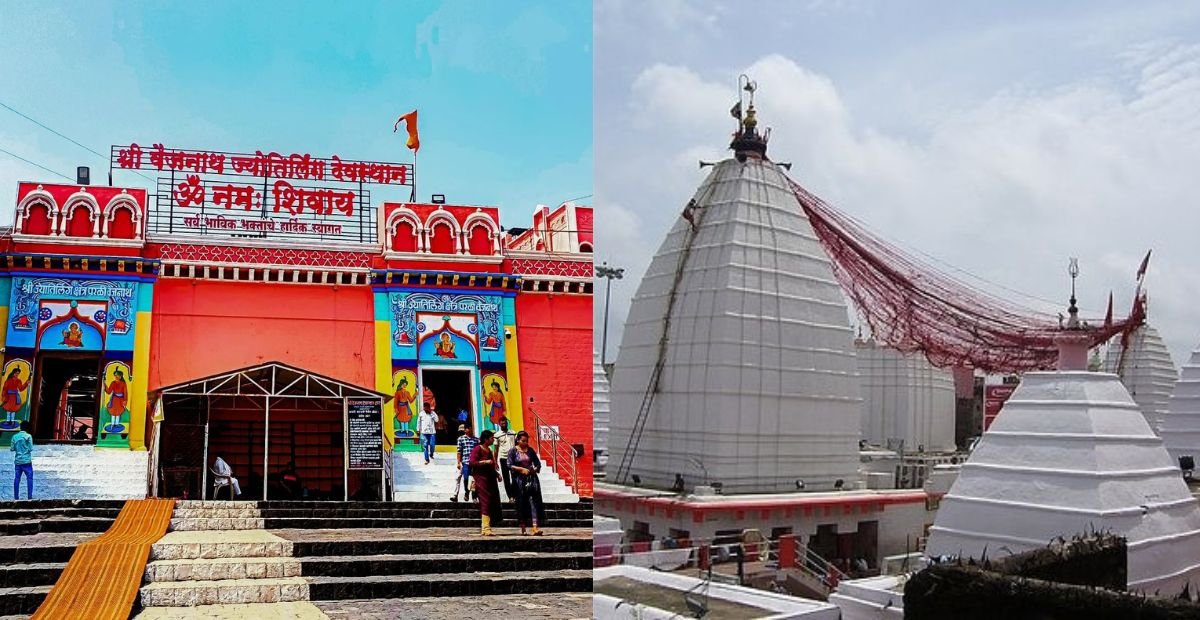India, the land of ancient temples and timeless devotion, is home to 12 sacred Jyotirlingas, each representing a radiant manifestation of Lord Shiva. Among these, the Vaidyanath Jyotirlinga, located in Deoghar, Jharkhand, stands out for its unique connection to healing and divine medicine. Worshipped as the “Vaidya Nath” or the Lord of Physicians, this Jyotirlinga is a powerful spiritual site for those seeking health, peace, and divine intervention.
Understanding the Significance of Jyotirlingas
The word “Jyotirlinga” translates to “Linga of Light”. It represents the infinite form of Shiva, symbolizing the union of energy and consciousness. The 12 Jyotirlingas scattered across India are not merely places of worship but are considered spiritual energy centers. Pilgrims believe that visiting these temples can cleanse sins and lead to moksha (liberation).
Each Jyotirlinga has a unique legend and spiritual power, and Vaidyanath Jyotirlinga is especially revered for its miraculous healing properties.
The Legend of Vaidyanath Jyotirlinga: Ravana’s Devotion
The powerful mythological story behind Vaidyanath Jyotirlinga centers around Ravana, the mighty king of Lanka. Ravana was a fierce devotee of Lord Shiva and performed intense tapasya (penance) to gain invincibility. Impressed by his devotion, Lord Shiva granted him a boon, agreeing to accompany Ravana to Lanka in the form of a Shiva Linga.
However, Shiva warned that the linga must not touch the ground until it reached Lanka. During his journey, Ravana stopped at Deoghar, feeling fatigued. He asked a local boy (believed to be Lord Vishnu in disguise) to hold the Linga briefly. The boy tricked Ravana and placed the Linga on the ground. When Ravana returned, he failed to lift it, despite all his strength.
Accepting his fate, Ravana worshipped the Linga there. This sacred spot became known as Vaidyanath Dham, and Lord Shiva manifested as the healer of all diseases, earning the name “Vaidya Nath”.
Where is Vaidyanath Jyotirlinga Located?
There are two temples associated with Vaidyanath Jyotirlinga:
1. Vaidyanath Dham, Deoghar (Jharkhand)
This is the more widely recognized shrine, attracting millions of pilgrims each year. Located in the Santhal Parganas region of Jharkhand, the temple is known for its serene atmosphere and powerful spiritual vibrations. Devotees believe that praying here brings relief from chronic illnesses and mental suffering.
2. Kundalpur, Bihar
Another temple claims to be the original Vaidyanath Jyotirlinga, located in Kundalpur, Bihar. Though lesser known, it holds deep spiritual importance for local devotees and preserves a strong connection to ancient Hindu traditions.
The Healing Power of Lord Shiva at Vaidyanath
What sets Vaidyanath Jyotirlinga apart from other Shiva temples is its association with health and healing. Pilgrims from across India visit this shrine seeking cures for physical ailments, emotional trauma, and spiritual imbalance.
Many believe that Lord Shiva, as Vaidya Nath, presides over this temple as a divine doctor. Numerous stories recount how people suffering from diseases have found relief and miraculous recovery after offering prayers and vows at the temple.
Spiritual healing at Vaidyanath goes beyond the physical—it brings mental peace, emotional clarity, and a sense of divine protection.
The Vaidyanath Dham Pilgrimage: Faith in Motion
The Vaidyanath Dham Yatra is a major spiritual event, especially during the Shravan month (July–August). Thousands of Kanwariyas (Shiva devotees) carry Ganga water from Sultanganj to offer at the temple, walking over 100 kilometers barefoot. This ritual is seen as a powerful form of penance and purification.
Pilgrims chant “Bol Bam!”, enduring heat and fatigue, fueled by unwavering faith in Shiva’s grace. This pilgrimage reflects the strength of devotion and the belief that Lord Shiva will answer prayers offered with sincerity.
Rituals and Worship at Vaidyanath Temple
Daily worship at Vaidyanath temple includes:
- Abhishekam (holy bath) of the Shiva Linga with milk, water, honey, and Ganga jal.
- Chanting of the Vaidyanath Ashtakam and Rudra Mantras.
- Offering Bael leaves, flowers, and sandal paste.
- Lighting diyas (oil lamps) for divine blessings.
On Maha Shivaratri, the temple becomes a hub of spiritual energy, as thousands gather to stay awake all night in meditation, chanting, and puja.
Preserving Indigenous Healing and Spiritual Traditions
Vaidyanath Jyotirlinga is not just a temple; it is a spiritual heritage site that carries India’s ancient knowledge of energy healing and spiritual medicine. In an age dominated by modern medicine, this shrine reminds us that true healing often begins within — through faith, surrender, and spiritual discipline.
The pranic energy of Lord Shiva at Vaidyanath is believed to balance chakras, reduce karmic burden, and awaken inner strength. For many, this temple is where science meets spirituality in the most sacred way.
Why Vaidyanath Jyotirlinga is a Must-Visit for Shiva Devotees
Whether you’re battling illness, seeking inner peace, or simply wanting to deepen your connection with Lord Shiva, Vaidyanath Jyotirlinga offers a sanctuary of hope, healing, and higher consciousness.
Its legendary roots, devotional rituals, and miraculous healings make it one of the most spiritually potent places in India. Visiting this shrine is not just a physical journey — it’s a journey inward, toward the soul’s healing.
Conclusion: The Eternal Light of Healing
In the divine presence of Vaidyanath Jyotirlinga, every prayer becomes a plea for healing, and every offering is a surrender to the ultimate healer — Lord Shiva. This sacred temple remains a beacon of divine health, drawing millions who come not just to worship, but to be healed — in body, mind, and soul.
For anyone seeking the blessings of Lord Shiva, Vaidyanath Dham is more than a pilgrimage. It is a spiritual hospital, a temple of transformation, and a fountain of faith.
